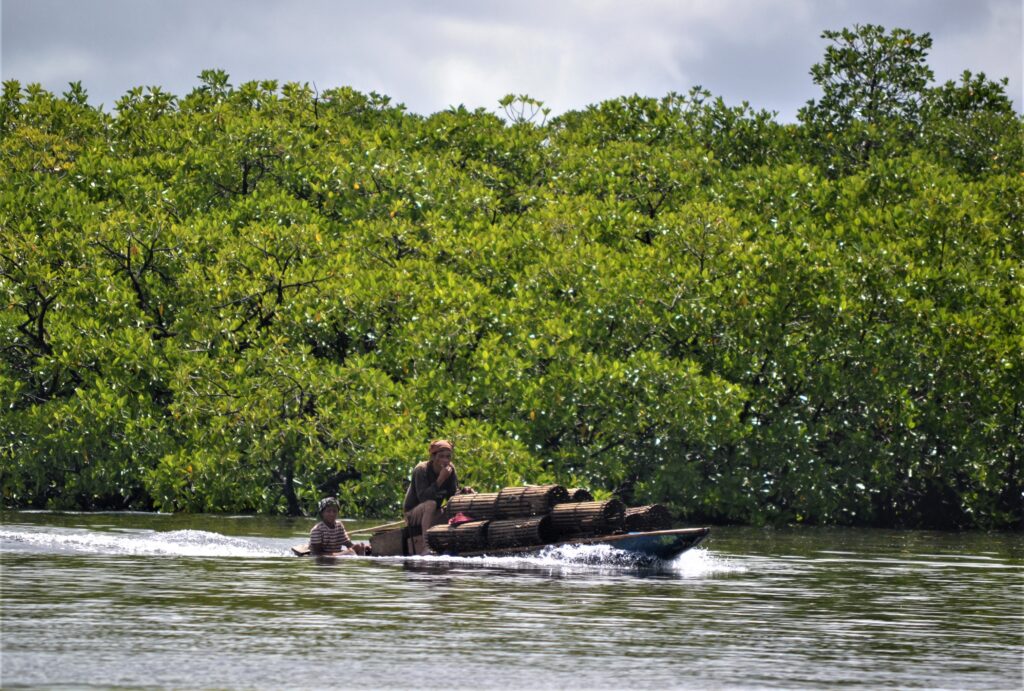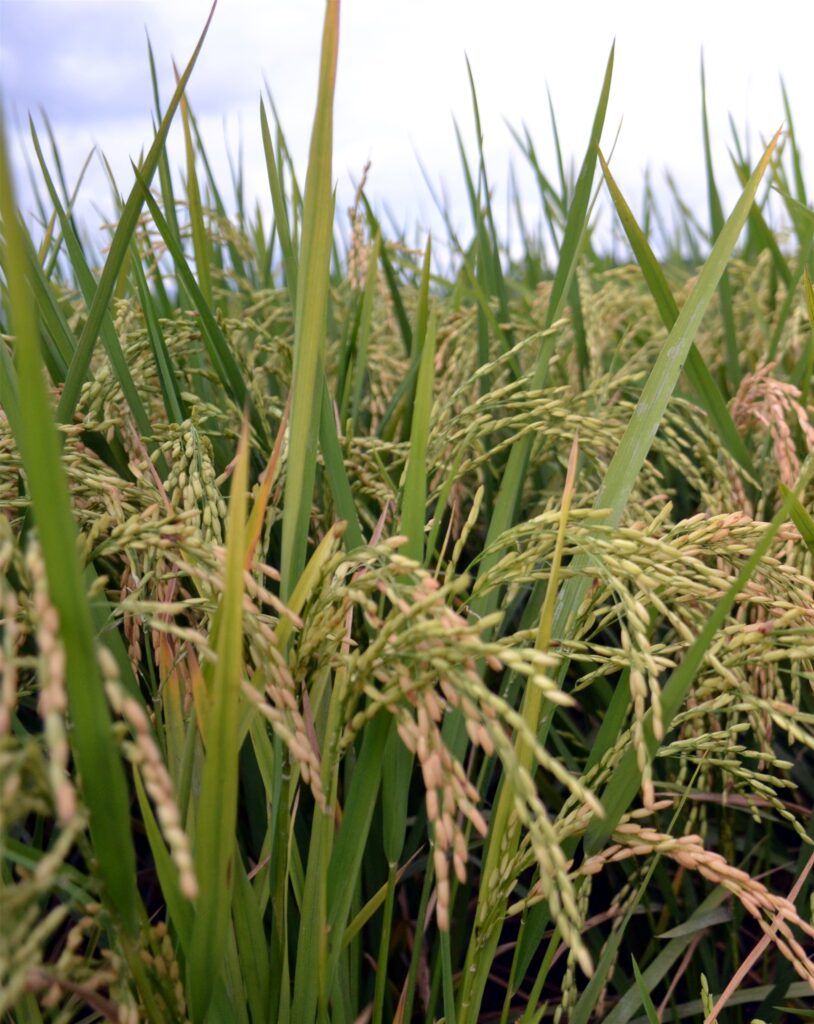Text and Photos by Henrylito D. Tacio
“Today’s threats to species and ecosystems are the greatest in recorded history. Virtually all of them are caused by human mismanagement of biological resources, often stimulated by misguided economic policies and faulty institutions that enable the exploiters to avoid the full costs of their exploitation.” – Philippine Environmental Quality Report
***
Del Carmen in Siargao, Surigao del Norte, is known for its 8,620 hectares of mangrove forest. Various species of mangroves are scattered all over the place, but a single forest block consists of 4,200 hectares where rare and endangered species of flora and fauna thrive.
In a survey done by a team of local and international researchers in the area last year, three new species of crickets were discovered: bark cricket (Endodrelanva siargaoensis), sword-tailed cricket (Trigonidium solis), and “mute” cricket (Paranisitra flavofacia).
“The discovery of the three species of crickets further proves that there are still thousands of new species in the Philippines that remain to be discovered and identified,” said Dr. Theresa Mundita S. Lim, executive director of the ASEAN Centre for Biodiversity (ACB).
She lauded the discovery team led by Sheryl Yap and Jessica Barbecho from the University of the Philippines at Los Baños, along with researchers from the Russian Academy of Sciences, the National University of Singapore, and the Museum National d’Histoire Naturelle in France.
“(The latest discovery) demonstrates that the Philippines is a critically important haven for biodiversity,” said Dr. Lim, who used to be the head of the Biodiversity Management Bureau (BMB) of the Department of Environment and Natural Resources.

Eight years ago, during the Philippine Biodiversity Expedition, some 300 new species were also discovered. Among those found were deep-sea armored corals, ornate sea pens, new sea urchins and sea stars, a shrimp-eating swell shark, and over 50 colorful new sea slugs, and insects and spiders.
“Biodiversity in the Philippines is still relatively unknown, and we found new species during nearly every dive and hike as we surveyed the country’s reefs, rainforests, and the ocean floor,” commented Dr. Terrence Gosliner, dean of Science and Research Collections at the California Academy of Sciences, who headed the expedition.
“The species lists and distribution maps that we created during the expedition will help to inform future conservation decisions and ensure that this remarkable biodiversity is afforded the best possible chance of survival,” she pointed out.
The Philippines, with more than 7,000 islands, is considered by respected scientists as one of the countries with the highest degree of biological diversity (biodiversity for short) in the world.
“The Philippines is one of the 18 mega-biodiverse countries of the world, containing two-thirds of the earth’s biodiversity and between 70% and 80% of the world’s plant and animal species,” said the Convention on Biological Diversity (CBD) of the country profile of the Philippines.
“The Philippines ranks fifth in the number of plant species and maintains 5% of the world’s flora,” the CBD added. “Species endemism is very high, covering at least 25 genera of plants and 49% of terrestrial wildlife, while the country ranks fourth in bird endemism.”

When it comes to biodiversity and conservation, most people think of eastern Africa, the Amazonian rainforest, or Madagascar. But “on a per unit area basis, the Philippines probably harbors more diversity of life than any other country on the planet,” the BMB said on its website.
Unfortunately, the Philippines is also considered as “one of the world’s biodiversity hotspots.” “This is because the Philippines continues to experience an alarming rate of destruction of these important resources brought about by overexploitation, deforestation, land degradation, climate change, and pollution, among others,” the BMB deplored.
Of the 207 identified species of terrestrial mammals, 42 species are considered threatened. At least 29 threatened species have been reported of the 419 reptiles found in the country. About 14 species of the 120 amphibians identified are also reported to be threatened.
Some 984 species of wild flora are threatened: 179 are critically endangered, 254 endangered, and 406 vulnerable. There are about 145 other threatened species.
A species is considered extinct when it is no longer found in the past 50 years. Endangered species are those that have been reduced in number to a critical level or whose habitats have been damaged or altered, or reduced.
Threatened is a general term used to describe the animal or plant species, which could be in the status of “endangered” and “insufficiently known.” In the Philippines, among those listed as endangered as the Philippine eagle, Philippine tarsier, tamaraw, and waling-waling.
With 700 threatened species, the Philippines also makes it “one of the top global conservation areas,” according to CBD. It added that the threats to biodiversity in the country “differ from one ecosystem to another.”
Habitat destruction is cited as the primary culprit. “The encroachment of human populations on several plant and animal species’ natural habitat has been a primary agent for the loss of biodiversity,” the Foundation of Philippine Environment (FPE) stressed. “Displacement from one’s habitat leaves species vulnerable to harsher new living conditions, predation from other species, and scarcity or inaccessibility of resources required for survival.”
This is particularly true in the case of vanishing forests. By the definition of the UN Food and Agriculture Organization, the country’s forest cover should be 24% of the country’s total land areas of 30 million hectares. “Between 2000 and 2005, the Philippines lost 2.1% of its forest cover, representing the second-fastest rate of deforestation in Southeast Asia and seventh in the world,” the CBD reported.

Unknown to many, the Philippines is part of the center of diversity of rice, coconut, mung bean, taro, and yam, as well as the center of origin and diversity of bananas in Southeast Asia. “Yet this agricultural diversity is nowadays experiencing general decline, as is the land devoted to these activities,” the CBD pointed out.
In inland water biodiversity, the same trend is happening. Most findings indicate “a decreasing trend in water quality, fish, biodiversity and cultural value in the country’s largest lake (referring to Laguna de Bay) and its tributary rivers,” the CBD reported.
The marine ecosystems are not spared from destruction. “Marine habitats such as coral reefs are being destroyed by way of irresponsible and unsustainable fishing and aquaculture is harming marine habitat ecosystems all over the country,” the FPE observed.
The exploitation of the country’s natural resources and wildlife has also contributed to the fast disappearance of biodiversity. “What started out as mere ‘subsistence hunting and gathering’ among traditional societies have been exacerbated into far less sustainable practice upon the advancement of international economic relationships,” the FPE said.
A few years back, during the International Biodiversity Day, Environment Secretary Roy Cimatu pointed this out: “We are facing a natural scarcity due to numerous factors, forest is the degradation of our terrestrial and marine ecosystems.”
In a press statement released during the Earth Day celebration, Senator Loren Legarda said that biodiversity loss due to habitat destruction and wildlife trade is heightened because of climate change. Studies showed that 30% of species would be at risk of extinction due to the warming climate.
“We need to take greater action to protect the delicate ecological balance,” the lady senator said. “It is incumbent upon us humans, who are the stewards of the Earth, to be more responsible as most of our actions are the very threats to other species.
“There needs to be stronger convergence among government agencies and local government units and collaboration with the private sector, civil society and all our citizens, to protect our species and conserve our biodiversity,” she added.
The US-based Earth Day Network said that normally, between one and five species will go extinct annually. However, scientists estimate the world is now losing species at 1,000 to 10,000 times the normal rate.
In the Philippines, thousands of species may go extinct before they are discovered. And this is very alarming.
“The number of previously unknown species being discovered in the Philippine habitats is currently among the greatest in the world,” noted the Chicago-based The Field Museum. “For a field biologist who studies biological diversity, the Philippines is, in many respects, a dream come true – a place where new discoveries lie around every corner.”

